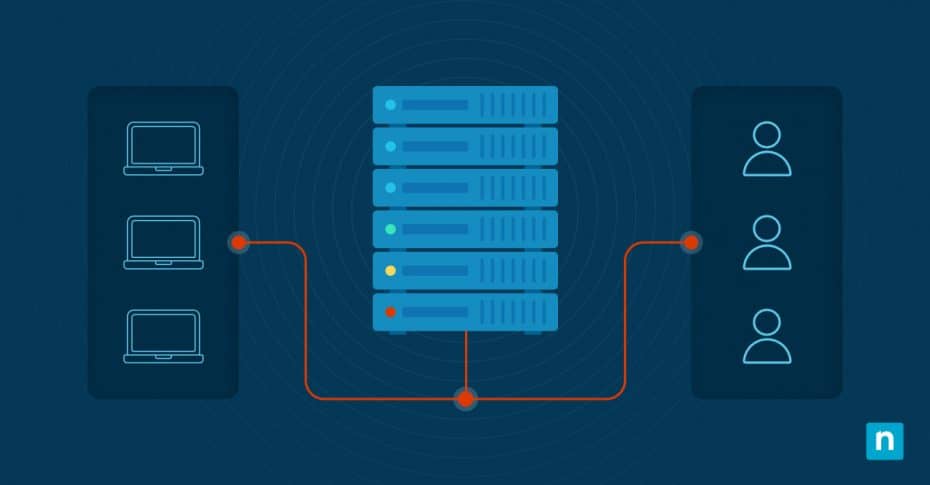The PCI Express native power settings make for a convenient way to manage power when running on battery. However, this setup is also known to occasionally cause issues on some devices. In addition, Link State Power Management (LSPM) in PCI Express isn’t as impactful for devices that are constantly plugged in. Such being the case, this guide will explain how to add or remove LSPM from Power Options in Windows 10.
System and access prerequisites for changing power options
Before we proceed, consider these prerequisites for seamless implementation:
✔️ Windows 10 (Home, Pro, Enterprise, Education)
✔️ Administrator privileges
✔️ Familiarity with powercfg and/or the Registry Editor
✔️ (Optional) Deployment via Group Policy or PowerShell scripts
⚠️ Warning: If you decide to use the Registry Editor to update the power options, it’s recommended to back up the Windows Registry first to set up a restore point. Unintended changes or errors can impact system stability and performance.
How to add “Link State Power Management” to Power Options (recommended)
Deploying this command will make the LSPM option visible in the Advanced power settings.
- Type cmd in Windows Search, select Command Prompt → Run as administrator.
- Use this command:
REG ADD HKLM\SYSTEM\CurrentControlSet\Control\Power\PowerSettings\501a4d13-42af-4429-9fd1-a8218c268e20\ee12f906-d277-404b-b6da-e5fa1a576df5 /v Attributes /t REG_DWORD /d 2 /f
Note: Don’t forget to run this command using an elevated Command Prompt.
Check the visibility of PCI Link State Power Management
To check LSPM visibility:
- Navigate to Control Panel → Power Options → Change plan settings → Advanced power settings.
- Then, expand PCI Express → Link State Power Management.
How to remove “Link State Power Management” from Power Options
On the contrary, here’s how to hide the PCI Express and the LSPM option:
- Type cmd in Windows Search, select Command Prompt → Run as administrator.
- Run the powercfg -attributes SUB_PCIEXPRESS ee12f906-d277-404b-b6da-e5fa1a576df5 +ATTRIB_HIDE to keep LSPM hidden.
Use the GUID values below to run the command.
Disabling this option is usually done for enterprise or kiosk deployments, where it’s ideal to limit power configuration options. This will both hide PCI Express and LSPM.
Alternative method: Configure LSPM visibility via Registry
Advanced users can also use the Windows Registry to make adjustments to Power Options.
- Press Win + R, type regedit in the dialog box, and tap OK. to open the Registry Editor.
- Navigate to or copy and paste this path to the Registry address bar.
- Computer\HKEY_LOCAL_MACHINE\SYSTEM\CurrentControlSet\Control\Power\PowerSettings\501a4d13-42af-4429-9fd1-a8218c268e20\ee12f906-d277-404b-b6da-e5fa1a576df5
- On the right pane, modify or create a new 32-bit DWORD value: Attributes.
- Double-click it and set its value to 1 to remove PCI Express and LSPM in the Power Options or 2 to add it.
- The changes will apply to the next instance of the Power Options dialog.
Link State Power Management GUID reference
These GUIDs can be used in a script, GPO, or the Registry to configure specific settings and apply policies across systems.
| Element | GUID |
| PCI Express Subgroup | SUB_PCIE → 501a4d13-42af-4429-9fd1-a8218c268e20 |
| Link State Power Management | ASPM → ee12f906-d277-404b-b6da-e5fa1a576df5 |
Use cases for hiding Link State Power Management in Power Options
Should you turn off Link State Power Management? Restricting end-user access to the LSPM settings is a common preference in controlled environments, particularly for these scenarios and applications:
- System builders or OEMs opting to simplify the UI for users.
- Enterprise admins looking to limit or prevent configuration drift.
- Power users tuning their device’s performance settings.
In addition, turning off Link State Power Management is often credited for reducing latency, or the time it takes for the system to recover from Sleep state.
Summing up the Link State Power Management option
When Link State Power Management is on, the system will prioritize power savings while toning down the continuous stream of data between a PC’s high-speed components. As a result, it will take longer for a device to recover from a Sleep state.
On the other hand, if LSPM is switched off or disabled, power consumption will remain average or higher, though data is transferred more quickly, which subsequently reduces latency. Administrators may choose to disable this setting to prioritize performance and avoid any compatibility issues.
With that in mind, you may consider other ways to change power settings in Windows 10 to optimize power consumption on the target device.







